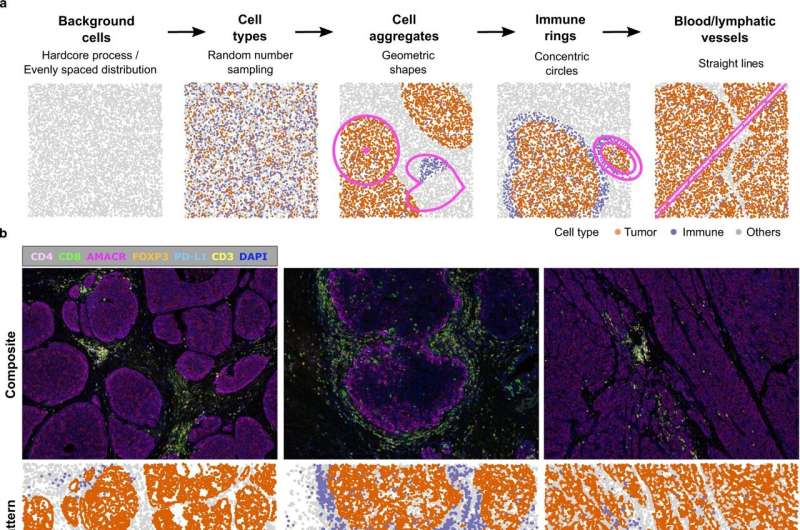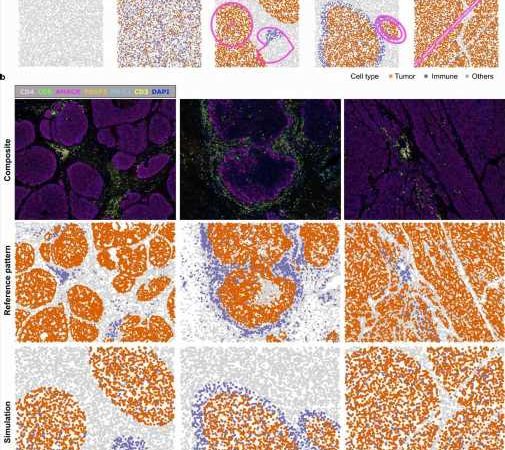
Research published in Nature Communications today, has shown that techniques initially developed for astronomy and ecology can be used to study the microenvironment of solid tumors.
Led by Peter Mac’s 2020 Lea Medal winner Dr. Anna Trigos and Yuzhou Feng, the study looked at patient tumor samples from prostate, colon and breast cancers and identified novel cancer subtypes, new patterns associated with patient survival, and was able to predict which patients were likely to develop metastasis first.
These exciting results have generated significant interest from medical oncologists, pathologists and immunologists.
“Many novel treatments are constantly being developed, but it is challenging to know what treatment will be best for a particular patient,” Dr. Trigos said.
“As a result, some patients receive treatments that will not work for them, losing valuable time and missing out on better options.
“We investigated new ways in which doctors can predict whether a treatment will work in a particular patient, but rather than looking at specific genes, we analyzed tumors as if they were a cosmos—looking at the location of millions of individual cells much like stars in the universe.”
Tumors are composed of millions of cells, including immune cells (that help fight infection), fibroblasts (that hold the tissue together) and endothelial cells (that make blood vessels).
This study found that there are certain patterns, or predictable “ecosystems,” in how cells in a tumor are located, much like constellations in our universe. The Peter Mac team found these patterns can then be used to predict how patients might respond to treatment or determine how aggressive a cancer is.
The researchers developed a computational toolkit called SPIAT (Spatial Image Analysis of Tissues), which can derive and quantify these patterns.
“As a result, these methods are being included in studies of clinical trials investigating response to novel treatments,” Dr. Trigos said.
“We believe that the cell types present and how they are located relative to one another is key in determining whether a cancer grows and whether a treatment will be effective.
“This is an exciting development as our strategy has provided a way to finally measure these patterns and relate it to patient outcomes.”
More information:
Yuzhou Feng et al, Spatial analysis with SPIAT and spaSim to characterize and simulate tissue microenvironments, Nature Communications (2023). DOI: 10.1038/s41467-023-37822-0
Journal information:
Nature Communications
Source: Read Full Article
